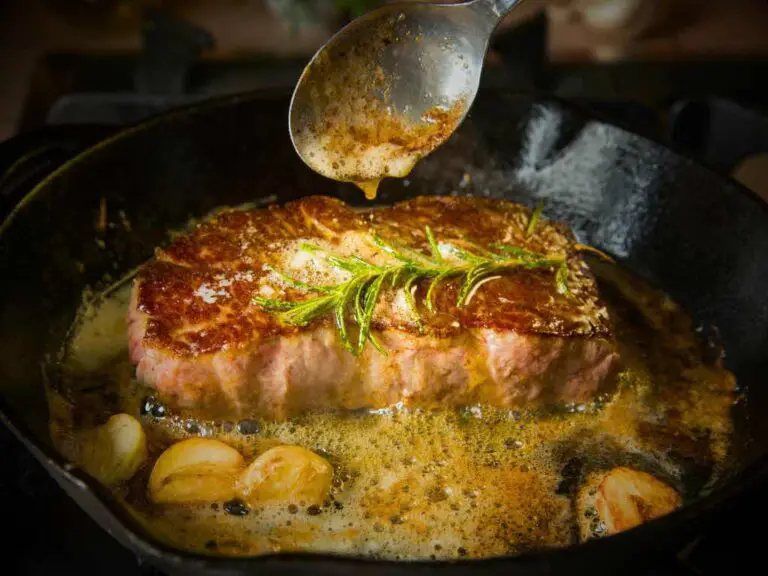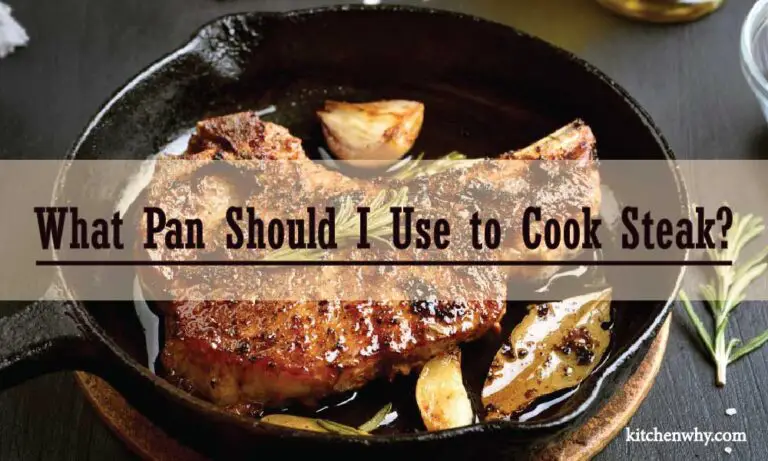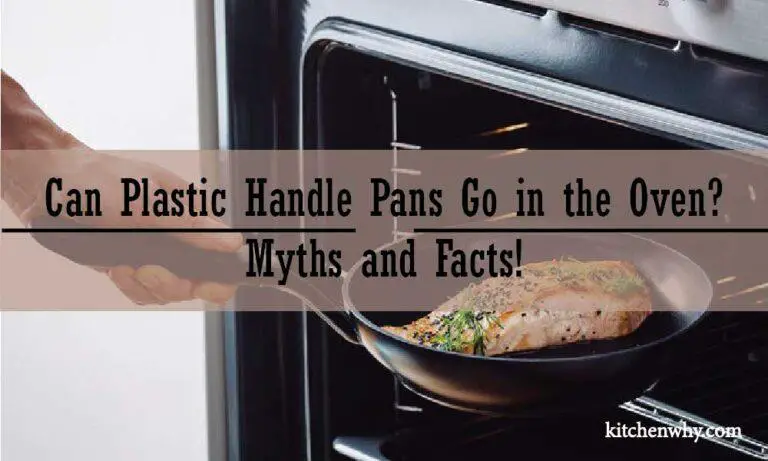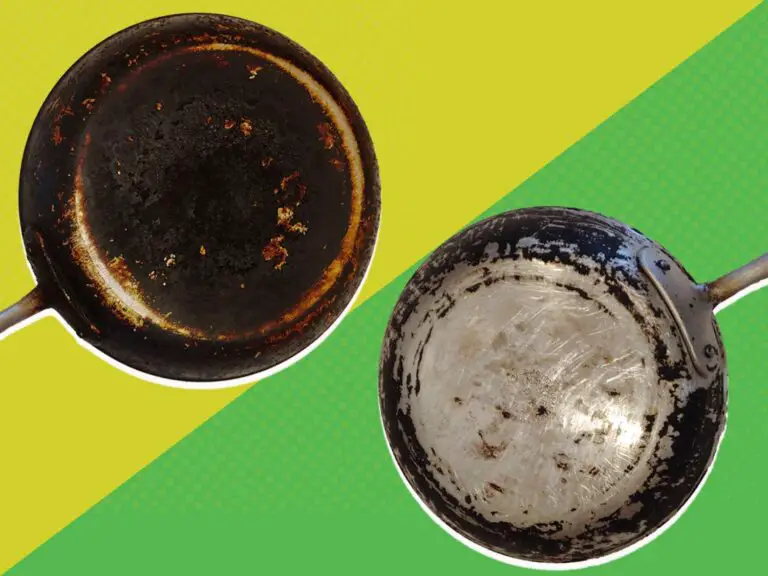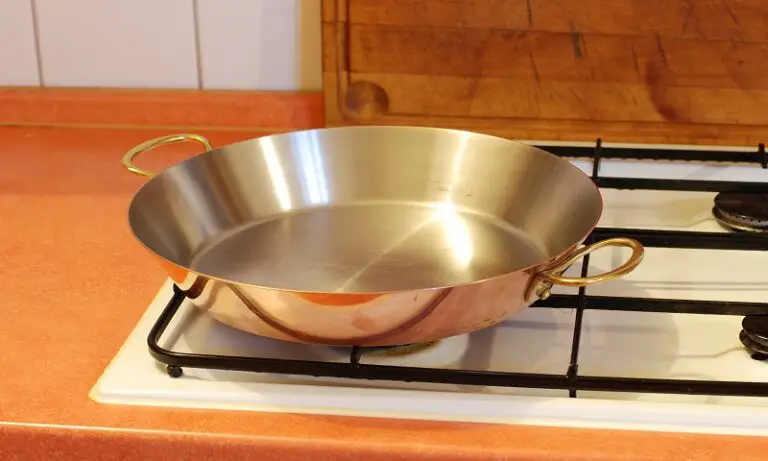How Hard is It to Bend a Frying Pan? Unveiling the Surprising Truth!
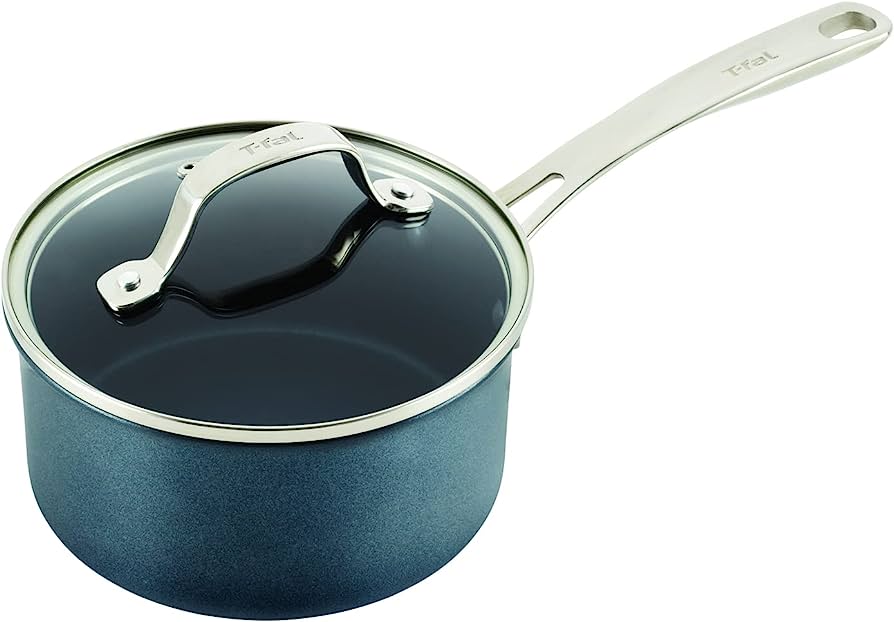
Bending a frying pan is incredibly difficult due to its sturdy construction and material composition. The strength and rigidity of a frying pan make it resistant to bending, making it a challenging task.
However, have you ever wondered just How Hard is It to Bend a Frying Pan? Is it possible to bend one, and if so, how difficult is it? In this exploration, we delve into the world of frying pans, examining their materials, construction, and the feasibility of bending them. By the end, we’ll gain a deeper appreciation for the craftsmanship behind these culinary workhorses and the science that ensures their steadfast performance. Let’s embark on this journey to unravel the mystery of bending a frying pan.
How Hard Is It to Bend a Frying Pan
Bending a frying pan can be quite difficult, depending on its material and construction. Frying pans are typically made from various materials like stainless steel, cast iron, aluminum, or non-stick coated pans. Each material has different properties that affect its flexibility and resistance to bending.
- Stainless Steel: Stainless steel frying pans are relatively rigid and difficult to bend. They are constructed to withstand high temperatures and maintain their shape during cooking. Bending a stainless steel frying pan would require significant force and may not be achievable without specialized equipment.
- Cast Iron: Cast iron frying pans are extremely sturdy and heavy-duty. They are not easily bendable due to their thick and robust construction. Attempting to bend a cast iron frying pan by hand would likely be nearly impossible.
- Aluminum: Aluminum frying pans are lighter than stainless steel or cast iron and are somewhat more pliable. However, they are still designed to maintain their shape and heat distribution, so bending one by hand would still be quite challenging.
- Non-stick Coated Pans: Frying pans with non-stick coatings are usually made of aluminum and have a thin layer of non-stick material applied to the cooking surface. While they might be more flexible than other materials, they are still not intended to be bent and may be damaged or ruined in the process.
Overall, bending a frying pan is not a common or practical task. If you have a damaged frying pan, it’s best to dispose of it properly and replace it with a new one. If you have a specific reason for needing a bent frying pan (e.g., for an art project), it’s crucial to consider safety precautions and potentially use alternative materials designed for such purposes.
Unveiling The Surprising Truth!
Do you ever wonder just how strong a frying pan really is? We often rely on these trusty kitchen tools to cook our meals without giving much thought to their durability. In this blog post, we will delve deep into the surprising truth about the strength of frying pans.
Through an exploration of their materials and construction, we will uncover the reality behind these seemingly rigid and resilient devices.
Introduction To The Strength Of Frying Pans
Frying pans, also known as skillet pans, are kitchen essentials that are used for various cooking techniques. From scrambling eggs to searing steaks, these versatile tools have become a staple in households around the world. But just how strong are they?
Overview Of Frying Pan Materials And Construction
To understand the strength of frying pans, we need to examine the materials and construction methods used in their production. Here are the key points to consider:
- Materials: Frying pans can be made from a variety of materials, including stainless steel, cast iron, non-stick coatings, and copper. Each material offers its own unique properties and level of durability.
- Stainless steel: Known for its corrosion resistance, stainless steel frying pans are highly durable and can withstand high temperatures. They are also easy to clean and maintain.
- Cast iron: Cast iron frying pans are renowned for their exceptional heat retention and even heat distribution. While they are sturdy and long-lasting, they require proper seasoning and care to prevent rusting.
- Non-stick coatings: Many modern frying pans feature non-stick coatings, such as teflon. These coatings provide an easy-to-clean surface and prevent food from sticking. However, they may not be as durable as other materials and can scratch or wear off over time.
- Copper: Copper frying pans are prized for their superior heat conductivity. They heat up quickly and distribute heat evenly. However, they are often lined with other materials like stainless steel to enhance durability.
- Construction: Frying pans are typically constructed with a base, sidewalls, and a handle. The base is often made of multiple layers of metal for enhanced heat distribution. The sidewalls are designed to contain the food and facilitate flipping and tossing. The handle is usually made of heat-resistant materials for safe and comfortable handling.
By understanding the materials and construction methods used in frying pans, we can gain a better understanding of their strength and durability. Stay tuned as we delve further into the surprising truth behind the bending of these kitchen essentials.
The Science Behind Metal Flexibility
With its strong construction and sturdy appearance, a frying pan may seem impenetrable and unyielding. But how hard is it really to bend a frying pan? To understand the science behind metal flexibility, we need to delve into the fascinating world of metallurgy and explore the atomic structure and properties of malleable metals.
Understanding The Concept Of Metal Ductility
- Ductility refers to a material’s ability to deform under applied stress without fracturing.
- Metals with higher ductility can be easily shaped and molded into various forms.
- The ability to bend and flex makes these metals ideal for applications where strength and durability are required.
Explaining The Atomic Structure And Metallurgical Properties Of Malleable Metals
- Malleable metals, such as aluminum and copper, have a unique atomic structure that allows for deformation.
- The arrangement of atoms and the presence of metallic bonds give these metals their inherent flexibility.
- Metallurgical properties, such as grain structure and crystal defects, can also impact the malleability of a metal.
Discussing The Influence Of Alloying Elements On Metal Flexibility
- Alloying elements, when added to a metal, can enhance or diminish its flexibility.
- Some elements, like magnesium or zinc, can increase the ductility of a metal.
- On the other hand, elements like carbon or nitrogen can reduce the metal’s ability to bend.
The Role Of Heat In The Bending Process
- Heat plays a crucial role in the bending of metals.
- Applying heat to a metal helps reduce its stiffness, making it easier to bend.
- At elevated temperatures, the metal’s atoms can move more freely, allowing for greater plastic deformation.
Examining The Impact Of Temperature On Metal Behavior
- The behavior of metals is highly influenced by temperature.
- As temperatures increase, metals tend to become softer and more malleable.
- However, there is a critical temperature at which metal begins to lose its strength and stability.
Highlighting The Critical Temperature For Bending A Frying Pan
- Bending a frying pan requires reaching its critical temperature, typically around 600-700 degrees fahrenheit.
- Beyond this temperature, the metal becomes soft enough to bend without snapping.
- It is important to exercise caution when working with high temperatures to ensure personal safety.
Understanding the science behind metal flexibility gives us insights into the remarkable ways in which materials can be shaped and manipulated. By harnessing the knowledge of metallurgy and utilizing the appropriate techniques, we can embrace the art of bending and appreciate the transformative power of metals.
The Techniques For Bending A Frying Pan
Bending a frying pan may seem like an impossible task, but with the right techniques, it can be achieved. In this section, we will delve into the traditional methods as well as the modern approaches for bending a frying pan.
Whether you prefer the hands-on approach or want to explore mechanical assistance, we’ve got you covered.
Exploring Traditional Methods Of Bending Frying Pans
Bending a frying pan using traditional methods involves manual force and hand tools. Here are the key points to consider:
- Heat treatment: The first step is to heat the frying pan to a high temperature. This softens the metal, making it easier to manipulate.
- Hammering: With the use of a hammer, you can apply physical force to reshape the pan according to your desired shape. Careful and accurate hammering is crucial for achieving the desired result.
- Cold water bath: After shaping the frying pan, it is necessary to cool it down quickly in a cold water bath. This helps to set the new shape and ensures the pan retains its new form.
Discussing The Use Of Hand Tools And Physical Force
When bending a frying pan by hand, the right tools and physical force play a significant role. Here are the key points to know:
- Pliers and wrenches: These hand tools can provide the leverage required to bend the frying pan effectively.
- Application of force: By exerting force at the right points, you can gradually reshape the pan. It requires strength and precision to bend the metal without causing damage.
- Iterative process: Bending a frying pan by hand is often an iterative process, requiring multiple attempts to achieve the desired shape. Each bend must be carefully thought out and executed.
Highlighting The Strength Required For Manual Bending Techniques
Manual bending techniques for frying pans require a considerable amount of strength. Here are the key points to understand:
- Physical stamina: Bending a frying pan requires endurance and stamina, as the process can be physically demanding.
- Proper technique: In addition to strength, using the correct technique is crucial. This ensures that the force is applied efficiently and reduces the risk of injury.
- Safety precautions: It is essential to wear protective gear, such as gloves and safety goggles, to minimize the risks associated with manual bending.
Modern Approaches To Bending Frying Pans
In contrast to the traditional methods, modern approaches utilize mechanical or hydraulic press. Here are the key points to know:
- Mechanical press: A mechanical press applies force through a mechanism, using a punch and die set. This method ensures controlled and consistent pressure for bending frying pans.
- Hydraulic press: Hydraulic presses use hydraulic fluid power to generate force. It allows for precise control over the bending process, making it an efficient and effective approach.
- Automation and accuracy: Modern approaches offer the advantage of automation, reducing the need for physical strength. They also enable precise and repeatable bending results.
With these techniques and approaches in mind, you can embark on the journey of bending a frying pan to suit your unique needs. Whether you opt for the traditional methods requiring manual force or prefer the modern automated approaches, remember to prioritize safety and careful execution throughout the process.
The Factors Affecting The Difficulty Of Bending
Bending a frying pan might seem like a daunting task, but it’s not impossible. The difficulty of bending a frying pan depends on several factors, including the material of the pan and its structural design. In this blog post, we will explore the factors that affect the difficulty of bending a frying pan and shed light on why some pans are easier to bend than others.
Influence Of Frying Pan Material
The material of a frying pan plays a crucial role in determining its malleability. Different materials exhibit varying levels of flexibility, making them more or less prone to bending. Here are the key points to understand about the influence of frying pan material:
- Stainless steel: Known for its durability and resistance to rust, stainless steel pans tend to be more difficult to bend due to their rigid nature.
- Cast iron: A favorite among professional chefs, cast iron pans are heavy and rugged, making them less likely to bend easily.
- Aluminum: Lightweight and excellent conductors of heat, aluminum pans are generally more malleable, which can make them easier to bend compared to stainless steel or cast iron.
Material Thickness And Composition
Beyond the type of material used, the thickness and composition of the frying pan also affect its bendability. These aspects can significantly impact the overall difficulty of bending, as outlined below:
- Thickness: Thicker frying pans tend to be more rigid and resistant to bending. Thinner pans, on the other hand, are typically more flexible and easier to bend.
- Composition: Some frying pans are made with multiple layers of different materials, such as stainless steel with an aluminum core. These composite pans can offer a balance between rigidity and flexibility, making them moderately difficult to bend.
Structural Design And Reinforcement
Apart from the frying pan’s material, its structural design and any reinforcements it may have can also affect the difficulty of bending. Here are the key points to consider regarding structural design and reinforcement:
- Extended handles: Frying pans with longer handles provide additional leverage, making it harder to bend them. The extended handle acts as a counterbalance and distributes force more evenly.
- Rivets: Pans with riveted handles or reinforced areas have increased strength, making them less prone to bending. These additional joining points add stability and structural integrity to the pan.
- Other reinforcements: Some pans feature additional reinforcements, such as an encapsulated base or a double-layered bottom. These design elements enhance the durability of the pan, contributing to increased difficulty in bending.
The difficulty of bending a frying pan depends on various factors, including the material used, its thickness and composition, as well as the structural design and any reinforcements it possesses. Understanding these factors can help you choose the ideal frying pan for your cooking needs.
Practical Experiments And Testimonials
How Hard Is It To Bend A Frying Pan?
Real-Life Experiences Of Attempting To Bend Frying Pans
Have you ever wondered how strong a frying pan really is? Some individuals have taken it upon themselves to put frying pans to the test and see just how resistant they are to bending. Their experiences and testimonials shed light on the surprising results and challenges faced during these practical experiments.
Sharing Stories Of Individuals Attempting To Bend Various Types Of Frying Pans
- The unyielding stainless steel: One brave experimenter attempted to bend a stainless steel frying pan using sheer force, but to no avail. The pan remained steadfast, refusing to bend even under extreme pressure. It was a testament to the strength and durability of this material.
- The flexible cast iron: Another cook decided to test the limits of a cast iron frying pan. With determination and a little bit of muscle, they managed to achieve a slight bend in the pan. However, it required a considerable amount of effort and strength, highlighting the robustness of cast iron.
- The unexpected non-stick challenge: In a surprising turn of events, a non-stick frying pan proved to be quite resistant to bending. Despite its lighter weight and seemingly less sturdy construction, it put up a fierce fight, hardly budging under pressure. This unexpected result left the experimenter both impressed and curious about the science behind non-stick coatings.
Highlighting The Surprising Results And Challenges Faced During The Experiments
- The power of physics: One common challenge encountered during these experiments was the realization that bending a frying pan required more than just brute force. Understanding the physics behind it became crucial, as individuals had to assess the right angles and leverage necessary to apply pressure effectively.
- The element of surprise: Many individuals were surprised by the resilience and strength of frying pans, particularly those made from stainless steel or cast iron. These pans proved to be much harder to bend than initially anticipated, challenging preconceived notions about their pliability.
- The importance of technique: Experimenters quickly realized that technique played a significant role in the outcome. Applying force in the wrong manner or at an inappropriate angle resulted in minimal bending, further emphasizing the skill required to manipulate these kitchen essentials.
Attempting to bend a frying pan is no easy feat. These real-life experiences and testimonials shed light on the surprising results and challenges faced during such experiments. It is clear that frying pans, especially those made from stainless steel or cast iron, possess remarkable strength and durability.
So, the next time you find yourself in the kitchen, remember the unseen power that lies within these seemingly ordinary kitchen tools.
Frequently Asked Questions For How Hard Is It To Bend A Frying Pan
How Hard Is It To Bend A Frying Pan?
Bending a frying pan requires a significant amount of force due to its sturdy construction. Most frying pans are made of materials like stainless steel or cast iron, which makes them highly resistant to bending. Attempting to bend a frying pan by hand would likely be very difficult, if not impossible, for the average person.
Conclusion
To sum up, bending a frying pan involves more than just physical strength. It requires the right technique and equipment to achieve the desired results. As we discussed throughout this blog post, the difficulty level of bending a frying pan depends on various factors such as the material of the pan, its thickness, and the force applied.
Cast iron pans are generally tougher to bend compared to aluminum pans due to their denser composition. However, with persistence and proper training, anyone can develop the skills needed to bend a frying pan. Whether you are a professional athlete or an aspiring strongman, bending a frying pan can be a thrilling challenge that pushes your limits.
Remember to always prioritize safety and take appropriate precautions when attempting such feats. So, go ahead, grab that frying pan, and start bending your way to strength and success!

